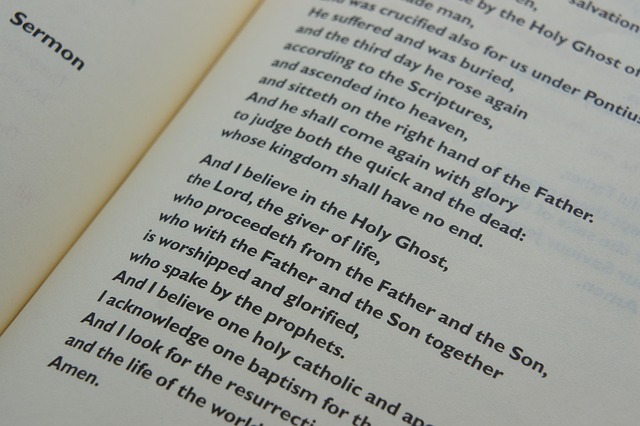Next summer these United States will celebrate our 250th birthday which is quite an accomplishment for what Abraham Lincoln called this, “… new nation, conceived in liberty, and dedicated to the proposition that all men are created equal.” As the first of such ventures, the USA has since inspired many others around the world to follow suit.
This milestone, however, shrinks by comparison to some older institutions, in particular the Church of Jesus Christ which will celebrate its nearly 2000th birthday this Sunday on Pentecost. With a powerful move of God’s Holy Spirit, the Church was born in Jerusalem and has since spread over all seven continents and into every nation.
As the church grew, she relied on the Bible to direct and guide her and most congregations continue to do so today. The Holy Scriptures have been preached, memorized, taught, and cherished as God’s revealed will for humanity. Both Old and New Testaments enable us to know God and to see His grand plan to save and redeem humans through His Son, Jesus Christ.
Because many early Christians could not read, and because 66 books were a lot to memorize, the early church leaders developed creeds which were summaries of the foundational beliefs and teachings. Pieces of these are even recognized in the letters of the New Testament indicating the very early use of such creedal summaries.
The most well-known and widely used creed in the US today is the Apostles Creed. It was written sometime between 200-300AD and continues to be a concise summary. But an expanded form was eventually developed into what is known today as the Nicene Creed. The Nicene Creed is more commonly used in churches globally and memorized by millions.
This year marks the 1700th birthday of this summary of Biblical teachings. The first Council at Nicaea was held between May and August of 325AD in Nicaea which is today’s Iznik, Turkey just southeast of Istanbul. In that year, more than 300 bishops from many different global congregations came together and composed this creed still recited by many Christians today.
The Nicene Creed articulates the nature and character of God, affirms the Trinity, and describes God’s work in creating all that exists. It emphasizes Jesus’ virgin birth, sinless life, sacrificial death, and miraculous resurrection, and highlights His saving and redeeming work for all human beings who will accept it.
The Nicene Creed mentions Jesus’ ascension back to heaven, which Christians celebrated again this past Sunday, and looks forward to His return to judge the living and the dead and to establish His eternal kingdom. This ancient statement of faith unequivocally supports the universal body of Christ, the Church, and encourages baptism into Her. It concludes with exciting anticipation of the believers’ resurrection and a glorious eternity with God.
Renowned author and Winchester native, Willa Cather, told her niece in 1940, “I think the Nicene Creed the most beautiful prose in the world. If I am wakeful in the night and think it through to myself, slowly, I can nearly always go to sleep. There is such authority and majesty in it.” Another more recent author, Patrick Henry Reardon, writing in the 2025 March/April Touchstone Magazine said this about the 1700-year-old statement, “After the Scriptures themselves, this is the most important document in the bequest of Christian history.”
Given such high regard, it’s hard to overstate the value of this brief summary of basic Christian beliefs held by most Christians throughout church history. With 236 English words, it beautifully encapsulates the foundational doctrines of those who follow Jesus. If you haven’t read it lately, google it to do so and meditate on the eternal truths it contains. Most importantly, if you’ve never accepted the salvation Jesus suffered and died to give you, receive that today that you may claim the exciting promises contained in the Nicene Creed and in the Holy Bible upon which it is based. Blessings, George
